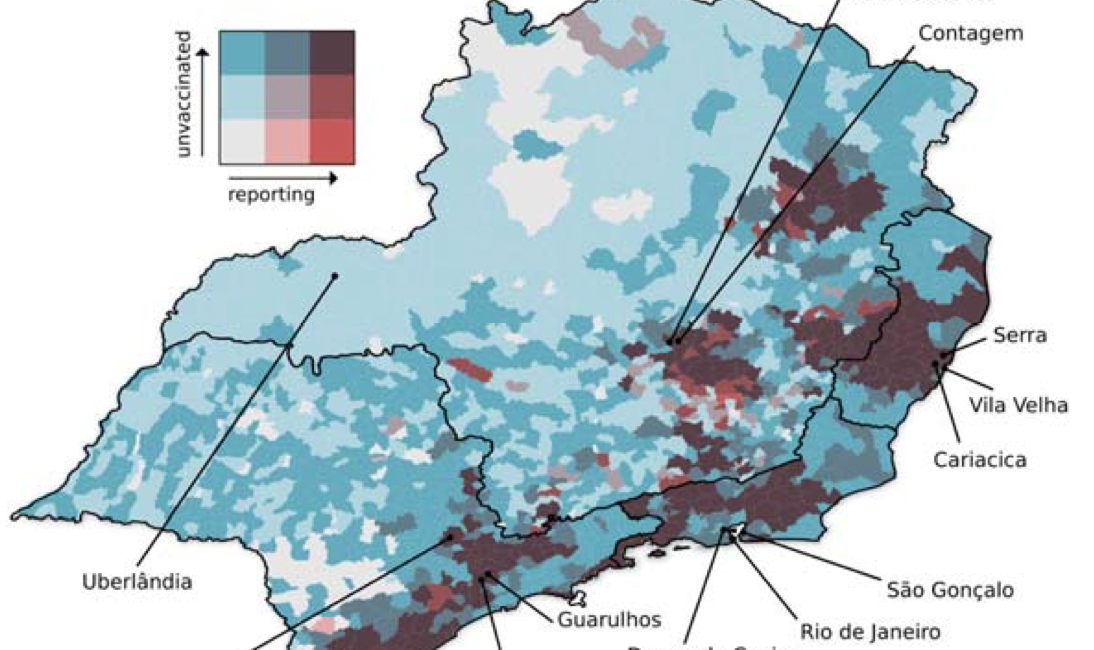Journal: medRxiv,2023.01.13.23284525v1: (2023)
Authors: Giovanetti M, Pinotti F, Zanluca C, Fonseca V, Nakase T, Koishi A, Tscha M, Soares G, Dorl G, Marques AE, Sousa RS, Adelino TER, Xavier J, Oliveira C, Patroca S, Guimaraes NR, Fritsch H, Mares-Guia MA, Levy F, Passos PH, da Silva VL, Pereira LA, Mendonca AF, de Macedo IL, de Souze DER , Costa GRT, de Castro MB, Iani FCM, Pereira MA, Cavalcante KRLJ, Freitas ARR, de Albuquerque CFC, Macario EM, dos Anjos MPD, Ramos RC, Campos AAS, Pinter A, Chame M, Abdalla L, Riediger IN, Ribeiro SP, Bento AI, de Oliveira T, Freitas C, de Moura NFB, Fabri A, Rodrigues CDS, dos Santos CC, de Almeida MAB, dos Santos E, Cardoso J, Augusto DA, Krempser E, Mucci LF, Gatti RR, Cardoso SF, Fuck JAB, Lopes MGD, Belmonte IL, da Silva GMP, Soares MRF, de Castilhos MMS, Silva JCS, Junior AB, Pouzato EG, Tanabe LS, Arita DA, Matsuo RM, Raymundo JS, Silva PCL, Silva ASAF, Samila S, Pereira GC, Stabeli R, Navegantes W, Moreira LA, Ferreira AGA, Pinheiro GG, Nunes BTD, Medeiros DBA, Cruz ACR, Cunha RV, Voorhis WV, de Filippis AMB, Almiron MA, Holmes EC, Ramos DG, Martins AP, Lourenco JL, Alcantara LCJ, dos Santos CND.
Abstract
Despite the considerable morbidity and mortality of Yellow fever virus (YFV) infections in Brazil, as well as its widespread presence in non-human primate host, our understanding of disease outbreaks is hampered by limited viral genomic data. Determining the timing and spatial corridors of YFV spread, as well as the geographic hotspots that link the endemic north of the country with epidemic extra-Amazonian regions, are central to predicting and preventing future outbreak events and epidemics. Here, we tracked the recent spread of the virus by integrating genome sequences of new YFV infections sampled from infected non-human primates and humans with both epidemiological and vector data. Through a combination of phylogenetic and epidemiological models we reconstructed the recent transmission history of YFV within different epidemic seasons in Brazil. A suitability index based on the highly domesticated Aedes aegypti was able to capture the seasonality of reported human infections. Spatial modelling revealed spatial hotspots with both past reporting and low vaccination coverage, which coincided with many of the largest urban centres in the Southeast. Phylodynamic analysis unravelled the circulation of three distinct YFV lineages, and provided proof of the directionality of a known spatial corridor of viral spread that connects the endemic North with the extra-Amazonian basin. This study illustrates that genomics linked with field sampling of animals and humans within a One Health framework can provide new insights into the landscape of YFV transmission, augmenting traditional approaches to infectious disease surveillance and control.

